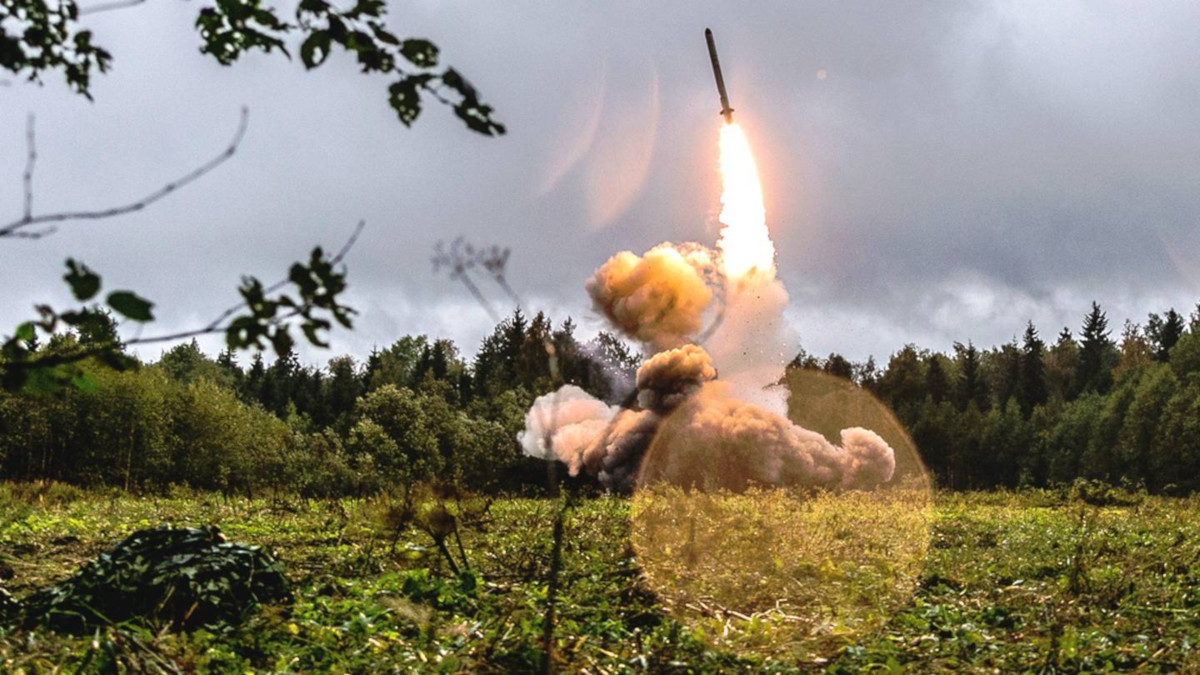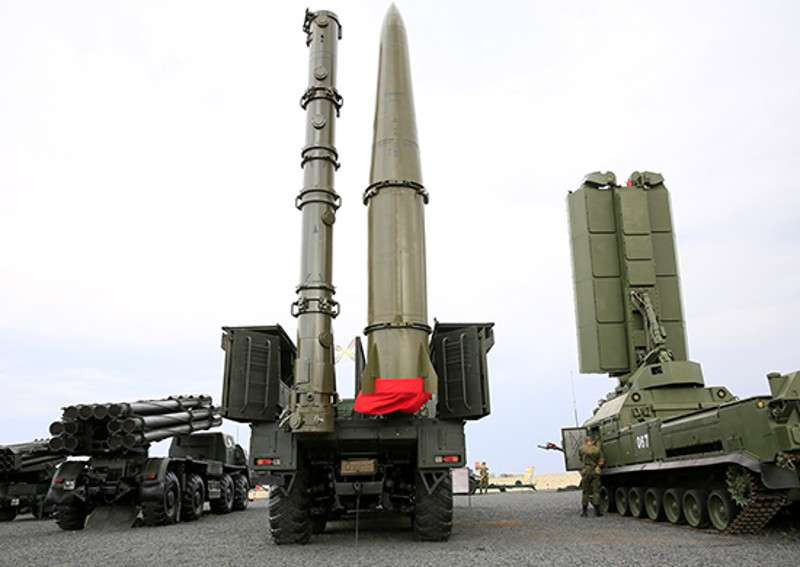Russia, for what appears to be the first time, has publicly acknowledged the existence of the ground-launched cruise missile, known variously as the SSC-8 and 9M729, which the United States claims violates the terms of the Intermediate-Range Nuclear Forces Treaty, or INF. The Kremlin says that it has tested the weapon, but that it is fully compliant with the agreement, and in turn has accused the U.S. government of fabricating the allegation in order to gain greater technical insight into Russian missile developments.
Deputy Foreign Minister Sergei Ryabkov offered the new information during a presentation regarding Russia’s position in the INF in Moscow on Nov. 26, 2018. In October 2018, President Donald Trump and his administration publicly announced their intention to withdraw from the agreement, citing Russia’s non-compliance as the major reason. So far, the U.S. government has not formally abrogated the deal. The United States and Russia, along with Belarus, Kazakhstan, and Ukraine, are all parties to the treaty, which U.S. and Soviet authorities signed in 1987.
The INF bans signatories from deploying ground-based nuclear- or conventionally-armed ballistic or cruise missiles with ranges between 310 and 3,420 miles. These restrictions do not apply to air- or sea-launched weapons.
After receiving the initial allegations, Russia “informed the American side that its previously specified framework for the testing activities regarding the 9M729 missile was incorrect,” Ryabkov said. “We gave the real time frame [of the tests]. We provided explanations about Washington’s erroneous ideas on the types of launchers used to carry out the tests.”

Ryabkov said that the 9M729, which the U.S. government refers to as the SSC-8 and which NATO has nicknamed the “Screwdriver,” has a range of under 300 miles. The Deputy Foreign Minister said the Kremlin provided some technical information to show that the missile’s design would not allow for increased fuel or other relatively simple modifications that would give it an increased range.
He also disclosed that Russian forces had test fired the weapon from the missile test facility at Kapustin Yar during the Zapad-2017, or West-2017, military exercises, which occurred in the fall of 2017. Ryabkov did not say whether the country had operationally deployed the weapon, as the U.S. government has said occurred in February 2017. The United States has previously disclosed that it had information suggesting that the missile had been in development for years beforehand.
Ryabkov said that Russia was almost done crafting its response to the latest American request for information regarding the 9M729/SSC-8 when the Trump Administration announced it would leave the INF. The treaty will be among the topics Trump is likely to discuss with Russian President Vladimir Putin during a meeting on the sidelines of the upcoming G20 summit in Argentina, which starts on Nov. 30, 2018.
In addition, Ryabkov confusingly referred to the missile as an upgrade of the ones associated with the Iskander-M system, which fires the 9M723 quasi-ballistic missiles. Iskander-K is a ground-launched cruise missile system that uses the same 8×8 transporter-erector-launcher (TEL), which uses the MZKT-7930 Astrolog chassis, but fires the 9M728 missile, which is compliant with the INF.

However, the Russian military has referred to the two Iskander systems interchangeably and there is no indication that the 9M729/SSC-8 is a ballistic missile and the TEL can be easily reconfigured to fire either weapon. It is worth mentioning that if the United States does believe that this missile is in violation of the INF and can fit within the existing TEL, it could use that as an argument to demand that Russia withdraw all of those vehicles from service, regardless of their configuration. In addition to Iskander, the Astrolog serves as the basis for the TELs of various other ground-based missile systems, including the Bastion-P ground-launched anti-ship cruise missile.
It does seem curious that the Russians would develop a new cruise missile for the Iskander that has reduced range when compared to the existing type. The 9M728 missile for the Iskander-K system uses has a publicly stated range of just shy of the INF minimum of 310 miles.

The Russians could have enlarged the size of the warhead, but had to keep the missile’s overall size and shape within the basic dimensions required to continue using the existing TELs, which could have reduced its maximum range. The 9M729/SSC-8 is reportedly nuclear capable, while the 9M728 is conventional.
It has long been assumed that the 9M729/SSC-8 is a derivative of the Kalibr sea-launched land-attack cruise missile, which itself was derived from the Soviet-era ground-based RK-55, also known as the SSC-X-4. The Soviets officially ended development of that system after signing the INF. A Kalibr-based design would not fit within the same canister as the existing 9M728 cruise missile, but might be able to fit within the Astrolog TEL, or version thereof with minimal modifications.

Of course, it is important to note that there is no independent confirmation of Ryabkov claims about the 9M729/SSC-8’s capabilities. He did not provide any imagery of the weapon in question or its TEL during his presentation. Russia may have simply chosen to publicly assign the 9M729 nomenclature to an entirely different missile from the one the United States knows as SSC-8 in order to try and conceal the development of that weapon.
Since Russia has no publicly confirmed the existence of an 9M729, it has immense latitude to claim that it applies to a missile of its choosing. Some experts had speculated that by previously deciding not to acknowledge the missile at all, the Kremlin had left open the possibility of withdrawing it from service and returning to compliance with the INF in exchange for concessions from the United States without having to admit it was ever violating the treaty, to begin with. The Russians might be using similar logic in this case by now claiming it is simply a modified or upgraded Iskander-K.
Russia could still be using this as cover for development and deployment of a ground-launched cruise missile based on an existing design, but with treaty-breaking range, which it could publicly reveal as a “new” system if and when the INF collapses. Ryabkov specifically threatened the development and deployment of new missiles if the U.S. government followed through with plans to withdraw from the agreement.
The Deputy Foreign Minister argued that the United States had provided little concrete information to substantiate its claims and allegedly demanded that the Russians disclose the time and location of all tests of missiles in the basic category “in order for the American side to choose from them the dates of ‘dubious’ launches.”

Ryabkov also said that one of the key pieces of evidence the United States provided to support its claims that Russia was violating the INF was satellite imagery showing an appropriately shaped TEL at Kapustin Yar. The Deputy Foreign Minister says the Kremlin countered these accusations by pointing out the multi-purpose nature of the TEL and saying that it launches various missiles from the site, but all within the parameters set by the INF.
The treaty does allow for the ground-based testing of air- and sea-launched weapons that would be in violation of the deal in a ground-launched configuration. Ryabkov claimed that the United States was exploiting the mechanisms within the INF to gather intelligence on its compliant missiles.
The U.S. government has never publicly provided evidence of its claims against Russia, making it hard to assess these assertions one way or another. It is easy to see how the United States might have been deliberately obscure in its discussions with the Kremlin in order to protect its intelligence sources and methods, especially if those included human sources within Russia’s military or defense industry. This could also make it difficult to declassify any of that information, which would help the U.S. government make its case publicly.
Ryabkov also reiterated the Russian position that the United States is the one in violation of the INF with the establishment of the Aegis Ashore missile defense site in Romania and work on another one of these facilities in Poland. The U.S. military insists that the variant of the Mk 41 vertical launch system that Aegis Ashore uses is specific to that system and cannot fire missiles such as the Tomahawk Land Attack Cruise missile in violation of the treaty.

The Deputy Foreign Minister also cited the issue of long-range unmanned aircraft with strike capabilities, which the Kremlin has long also cited as a violation of the INF. The United States disagrees that armed drones are equivalent in treaty terms to ground-launched cruise missiles. Ryabkov suggested that Russia does not inherently disagree with that particular position, but claimed that the U.S. government had been intransigent in finding a way to formally clarify how the agreement applies to those systems.
All told, as expected, the Kremlin appears to be seizing on the U.S. government’s decision to pull out of the INF without publicly presenting clear evidence of Russia’s alleged violations, as an opportunity to frame the United States as the real threat to the international “rules-based order.” This is at odds with Russia’s actual actions, including its efforts to weaken various other arms control agreements, as well as its illegal annexation of Ukraine’s Crimea region. The latter issue has once again become a hot topic following a violent skirmish between Russia and Ukraine maritime forces in the Kerch Strait separating the Black Sea and the Sea of Azov.
It is well in line with the Kremlin’s well-established procedures for distracting and misdirecting from its own transgressions, including misinformation and disinformation about its critics. Most commonly, it involves accusations, often unfounded conspiracy theories, which paint its opponents as guilty of exactly the same crimes they accuse the Russians of committing. In this case, alleging the United States is manipulating arms control agreements to spy on Russia roughly mirrors Ameican accusations about the Kremlin’s actions in relation to the Open Skies Treaty.
“There is a growing awareness in the world of the risks and threats that this ill-advised decision may entail not only for regional but also for global international security and stability in general,” Ryabkov said during his presentation. “Obviously, the main threat lies in the risk of entire regions descending into the arms race. Notably, this time this it will be a multilateral arms race at a new technological level.”
With the disclosure that the 9M729/SSC-8 is real, but with a continuing lack of clear, verifiable information about its basic design and capabilities, it appears that this arms race has been going on for years already.
Contact the author: joe@thedrive.com
